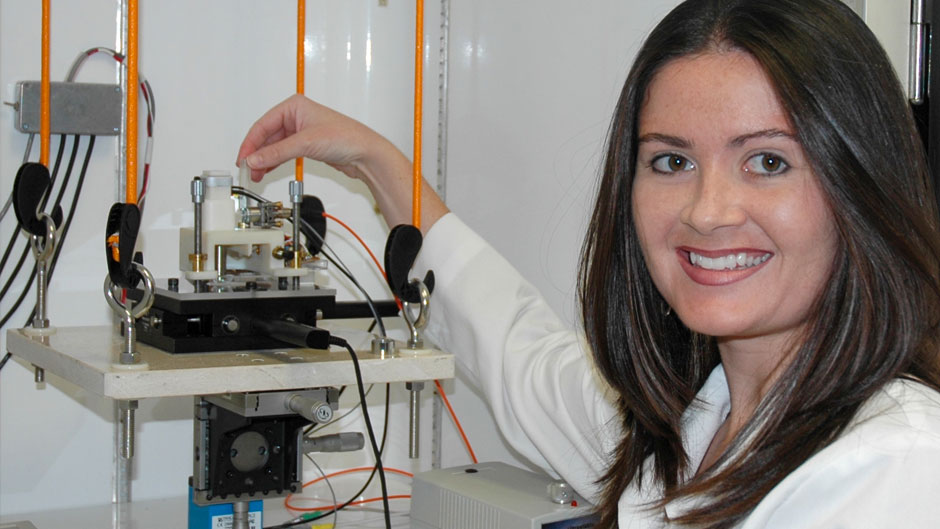An early fascination with the eye, born partly out of a desire to learn why her own eyesight was poor, has helped Noel Ziebarth conduct successful research into the most valued of the senses. The odd-looking devices made 7-year-old Noel Ziebarth a bit nervous.
.
They looked like something right out of a science-fiction comic book, had peculiar names like phoropter, retinoscope, and tonomete, and would be used, she learned, to examine and peer into her eyes. Sitting next to her was an eye specialist, who explained how each instrument worked and how they would help correct her poor eyesight. “And that reassuring voice helped a lot,” Ziebarth recalled of the first time she ever saw an ophthalmologist. While her anxiety waned, her curiosity grew. Suddenly, she wanted to know everything there was to know about the human eye—how it works, why some people see better than others, and what causes blindness.
Today, as an associate professor of biomedical engineering in the University of Miami College of Engineering, Ziebarth is still fascinated with the eye. Only now, her spirit of inquiry has led to groundbreaking research that is not only helping people to see better but also aiding in the discovery of treatments that will allow the sightless to see again. “I want my research to impact people’s lives and help make a difference,” Ziebarth said.
Case Study: How PepsiCo achieved 96% cost savings on tooling with 3D Printing Technology
Above: PepsiCo food, snack, and beverage product line-up/Source: PepsiCo PepsiCo turned to tooling with 3D printing...






























0 Comments